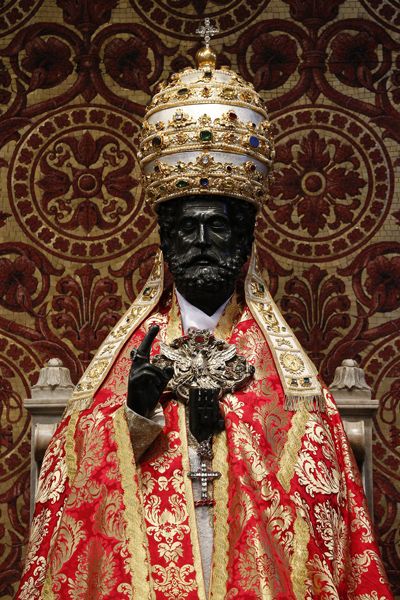Today is the Feast of St Peter and St Paul.
 |
| SS Peter and Paul, with SS John the Evangelist and Zeno. The left panel of the polyptych of San Zeno painted in 1457-60 by Andrea Mantegna (c.1431-1506) Image: New Liturgical Movement Tradition assets that both were martyred on this day, and both by their death in Rome sanctified the Church there, a charism that was to help create the Papacy. A nearly contemporaneous work by Carlo Crivelli (1430/5-c.1494) painted for a church in Fermo and that is now in the National Gallery in London, is illustrated and analysed in a post from 2020 from the Dominican Chaplaincy of St Albert at Edinburgh University and it can be seen at Crivelli's Saints Peter and Paul. I must say in the two images it includes of St Peter by Crivelli the Prince of the Apostles looks distinctly grumpy. Historic customs associated with the joint feast are outline in a post from Tradition in Action at Celebrating the Feast of Ss. Peter and Paul by Rachel L. Lozowski  St. Peter statue in the Vatican Basilica in solemn Papal vestments Image: Tradition in Action Now all we need is a living Pope vested like that. |


